《les of lasers fifth edition = 激光原理 第5版》
| 作者 | 编者 |
|---|---|
| 出版 | 未查询到或未知 |
| 参考页数 | |
| 出版时间 | 没有确切时间的资料 目录预览 |
| ISBN号 | 无 — 求助条款 |
| PDF编号 | 820576818(仅供预览,未存储实际文件) |
| 求助格式 | 扫描PDF(若分多册发行,每次仅能受理1册) |
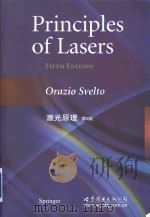
1.Introductory Concepts1
1.1.Spontaneous and Stimulated Emission, Absorption1
1.2.The Laser Idea4
1.3.Pumping Schemes6
1.4.Properties of Laser Beams8
1.4.1.Monochromaticity9
1.4.2.Coherence9
1.4.3.Directionality10
1.4.4.Brightness11
1.4.5.Short Time Duration13
1.5.Types of Lasers14
1.6.Organization of the Book14
Problems15
2.Interaction of Radiation with Atoms and Ions17
2.1.Introduction17
2.2.Summary of Blackbody Radiation Theory17
2.2.1.Modes of a Rectangular Cavity19
2.2.2.The Rayleigh-Jeans and Planck Radiation Formula22
2.2.3.Planck's Hypothesis and Field Quantization24
2.3.Spontaneous Emission26
2.3.1.Semiclassical Approach26
2.3.2.Quantum Electrodynamics Approach30
2.3.3.Allowed and Forbidden Transitions31
2.4.Absorption and Stimulated Emission32
2.4.1.Rates of Absorption and Stimulated Emission32
2.4.2.Allowed and Forbidden Transitions36
2.4.3.Transition Cross Section, Absorption and Gain Coefficient37
2.4.4.Einstein Thermodynamic Treatment41
2.5.Line Broadening Mechanisms43
2.5.1.Homogeneous Broadening43
2.5.2.Inhomogeneous Broadening47
2.5.3.Concluding Remarks49
2.6.Nonradiative Decay and Energy Transfer50
2.6.1.Mechanisms of Nonradiative Decay50
2.6.2.Combined Effects of Radiative and Nonradiative Processes56
2.7.Degenerate or Strongly Coupled Levels58
2.7.1.Degenerate Levels58
2.7.2.Strongly Coupled Levels60
2.8.Saturation64
2.8.1.Saturation of Absorption: Homogeneous Line64
2.8.2.Gain Saturation: Homogeneous Line67
2.8.3.Inhomogeneously Broadened Line69
2.9.Decay of an Optically Dense Medium70
2.9.1.Radiation Trapping71
2.9.2.Amplified Spontaneous Emission71
2.10.Concluding Remarks76
Problems77
References78
3.Energy Levels, Radiative and Nonradiative Transitions in Molecules and Semiconductors81
3.1.Molecules81
3.1.1.Energy Levels81
3.1.2.Level Occupation at Thermal Equilibrium85
3.1.3.Stimulated Transitions87
3.1.4.Radiative and Nonradiative Decay91
3.2.Bulk Semiconductors93
3.2.1.Electronic States93
3.2.2.Density of States97
3.2.3.Level Occupation at Thermal Equilibrium98
3.2.4.Stimulated Transitions101
3.2.5.Absorption and Gain Coefficients104
3.2.6.Spontaneous Emission and Nonradiative Decay110
3.2.7.Concluding Remarks112
3.3.Semiconductor Quantum Wells113
3.3.1.Electronic States113
3.3.2.Density of States116
3.3.3.Level Occupation at Thermal Equilibrium118
3.3.4.Stimulated Transitions119
3.3.5.Absorption and Gain Coefficients121
3.3.6.Strained Quantum Wells125
3.4.Quantum Wires and Quantum Dots126
3.5.Concluding Remarks128
Problems128
References129
4.Ray and Wave Propagation Through Optical Media131
4.1.Introduction131
4.2.Matrix Formulation of Geometrical Optics131
4.3.Wave Reflection and Transmission at a Dielectric Interface137
4.4.Multilayer Dielectric Coatings139
4.5.The Fabry-Perot Interferometer142
4.5.1.Properties of a Fabry-Perot Interferometer142
4.5.2.The Fabry-Perot Interferometer as a Spectrometer146
4.6.Diffraction Optics in the Paraxial Approximation147
4.7.Gaussian Beams150
4.7.1.Lowest-Order Mode150
4.7.2.Free Space Propagation153
4.7.3.Gaussian Beams and the ABCD Law156
4.7.4.Higher-Order Modes158
4.8.Conclusions159
Problems159
References161
5.Passive Optical Resonators163
5.1.Introduction163
5.2.Eigenmodes and Eigenvalues167
5.3.Photon Lifetime and Cavity Q169
5.4.Stability Condition171
5.5.Stable Resonators175
5.5.1.Resonators with Infinite Aperture175
5.5.1.1.Eigenmodes176
5.5.1.2.Eigenvalues180
5.5.1.3.Standing- and Traveling-Waves in a Two-Mirror Resonator182
5.5.2.Effects of a Finite Aperture183
5.5.3.Dynamically and Mechanically Stable Resonators186
5.6.Unstable Resonators189
5.6.1.Geometrical-Optics Description190
5.6.2.Wave-Optics Description192
5.6.3.Advantages and Disadvantages of Hard-Edge Unstable Resonators196
5.6.4.Variable-Reflectivity Unstable Resonators196
5.7.Concluding Remarks200
Problems200
References203
6.Pumping Processes205
6.1.Introduction205
6.2.Optical Pumping by an Incoherent Light Source208
6.2.1.Pumping Systems208
6.2.2.Absorption of Pump Light211
6.2.3.Pump Efficiency and Pump Rate213
6.3.Laser Pumping215
6.3.1.Laser Diode Pumps217
6.3.2.Pump Transfer Systems219
6.3.2.1.Longitudinal Pumping219
6.3.2.2.Transverse Pumping224
6.3.3.Pump Rate and Pump Efficiency225
6.3.4.Threshold Pump Power for Four-Level and Quasi-Three-Level Lasers228
6.3.5.Comparison Between Diode-pumping and Lamp-pumping230
6.4.Electrical Pumping232
6.4.1.Electron Impact Excitation236
6.4.1.1.Electron Impact Cross Section237
6.4.2.Thermal and Drift Velocities240
6.4.3.Electron Energy Distribution242
6.4.4.The Ionization Balance Equation245
6.4.5.Scaling Laws for Electrical Discharge Lasers247
6.4.6.Pump Rate and Pump Efficiency248
6.5.Conclusions250
Problems250
References253
7.Continuous Wave Laser Behavior255
7.1.Introduction255
7.2.Rate Equations255
7.2.1.Four-Level Laser256
7.2.2.Quasi-Three-Level Laser261
7.3.Threshold Conditions and Output Power: Four-Level Laser263
7.3.1.Space-Independent Model264
7.3.2.Space-Dependent Model270
7.4.Threshold Condition and Output Power: Quasi-Three-Level Laser279
7.4.1.Space-Independent Model279
7.4.2.Space-Dependent Model280
7.5.Optimum Output Coupling283
7.6.Laser Tuning285
7.7.Reasons for Multimode Oscillation287
7.8.Single-Mode Selection290
7.8.1.Single-Transverse-Mode Selection290
7.8.2.Single-Longitudinal-Mode Selection291
7.8.2.1.Fabry-Perot Etalons as Mode-Selective Elements292
7.8.2.2.Single Mode Selection via Unidirectional Ring Resonators294
7.9.Frequency-Pulling and Limit to Monochromaticity297
7.10.Laser Frequency Fluctuations and Frequency Stabilization300
7.11.Intensity Noise and Intensity Noise Reduction304
7.12.Conclusions306
Problems308
References310
8.Transient Laser Behavior313
8.1.Introduction313
8.2.Relaxation Oscillations313
8.2.1.Linearized Analysis315
8.3.Dynamical Instabilities and Pulsations in Lasers318
8.4.Q-Switching319
8.4.1.Dynamics of the Q-Switching Process319
8.4.2.Methods of Q-Switching321
8.4.2.1.Electro-Optical Q-Switching322
8.4.2.2.Rotating Prisms323
8.4.2.3.Acousto-Optic Q-Switches324
8.4.2.4.Saturable-Absorber Q-Switch325
8.4.3.Operating Regimes328
8.4.4.Theory of Active Q-Switching329
8.5.Gain Switching337
8.6.Mode-Locking339
8.6.1.Frequency-Domain Description340
8.6.2.Time-Domain Picture344
8.6.3.Methods of Mode-Locking346
8.6.3.1.Active Mode-Locking346
8.6.3.2.Passive Mode Locking350
8.6.4.The Role of Cavity Dispersion in Femtosecond Mode-Locked Lasers356
8.6.4.1.Phase-Velocity, Group-Velocity and Group-Delay-Dispersion356
8.6.4.2.Limitation on Pulse Duration due to Group-Delay Dispersion358
8.6.4.3.Dispersion Compensation360
8.6.4.4.Soliton-type of Mode-Locking361
8.6.5.Mode-Locking Regimes and Mode-Locking Systems364
8.7.Cavity Dumping368
8.8.Concluding Remarks369
Problems370
References372
9.Solid-State, Dye, and Semiconductor Lasers375
9.1.Introduction375
9.2.Solid-State Lasers375
9.2.1.The Ruby Laser377
9.2.2.Neodymium Lasers380
9.2.2.1.Nd:YAG380
9.2.2.2.Nd:Glass383
9.2.2.3.Other Crystalline Hosts384
9.2.3.Yb:YAG384
9.2.4.Er:YAG and Yb:Er:glass386
9.2.5.Tm:Ho:YAG387
9.2.6.Fiber Lasers389
9.2.7.Alexandrite Laser391
9.2.8.Titanium Sapphire Laser394
9.2.9.Cr.LISAF and Cr:LICAF396
9.3.Dye Lasers397
9.3.1.Photophysical Properties of Organic Dyes397
9.3.2.Characteristics of Dye Lasers401
9.4.Semiconductor Lasers405
9.4.1.Principle of Semiconductor Laser Operation405
9.4.2.The Homojunction Laser407
9.4.3.The Double-Heterostructure Laser408
9.4.4.Quantum Well Lasers413
9.4.5.Laser Devices and Performances416
9.4.6.Distributed Feedback and Distributed Bragg Reflector Lasers419
9.4.7.Vertical Cavity Surface Emitting Lasers423
9.4.8.Applications of Semiconductor Lasers425
9.5.Conclusions427
Problems427
References429
10.Gas, Chemical, Free Electron, and X-Ray Lasers431
10.1.Introduction431
10.2.Gas Lasers431
10.2.1.Neutral Atom Lasers432
10.2.1.1.Helium-Neon Lasers432
10.2.1.2.Copper Vapor Lasers437
10.2.2.Ion Lasers439
10.2.2.1.Argon Laser439
10.2.2.2.He-Cd Laser442
10.2.3.Molecular Gas Lasers444
10.2.3.1.The CO2 Laser444
10.2.3.2.The CO Laser454
10.2.3.3.The N2 Laser456
10.2.3.4.Excimer Lasers457
10.3.Chemical Lasers461
10.3.1.The HF Laser461
10.4.The Free-Electron Laser465
10.5.X-ray Lasers469
10.6.Concluding Remarks471
Problems471
References473
11.Properties of Laser Beams475
11.1.Introduction475
11.2.Monochromaticity475
11.3.First-Order Coherence476
11.3.1.Degree of Spatial and Temporal Coherence477
11.3.2.Measurement of Spatial and Temporal Coherence480
11.3.3.Relation Between Temporal Coherence and Monochromaticity483
11.3.4.Nonstationary Beams485
11.3.5.Spatial and Temporal Coherence of Single-Mode and Multimode Lasers485
11.3.6.Spatial and Temporal Coherence of a Thermal Light Source488
11.4.Directionality489
11.4.1.Beams with Perfect Spatial Coherence489
11.4.2.Beams with Partial Spatial Coherence491
11.4.3.The M2 Factor and the Spot-Size Parameter of a Multimode Laser Beam492
11.5.Laser Speckle495
11.6.Brightness498
11.7.Statistical Properties of Laser Light and Thermal Light499
11.8.Comparison Between Laser Light and Thermal Light501
Problems503
References504
12.Laser Beam Transformation: Propagation, Amplification, Frequency Conversion, Pulse Compression and Pulse Expansion505
12.1.Introduction505
12.2.Spatial Transformation: Propagation of a Multimode Laser Beam506
12.3.Amplitude Transformation: Laser Amplification507
12.3.1.Examples of Laser Amplifiers: Chirped-Pulse-Amplification512
12.4.Frequency Conversion: Second-Harmonic Generation and Parametric Oscillation516
12.4.1.Physical Picture516
12.4.1.1.Second-Harmonic Generation517
12.4.1.2.Parametric Oscillation524
12.4.2.Analytical Treatment526
12.4.2.1.Parametric Oscillation528
12.4.2.2.Second-Harmonic Generation532
12.5.Transformation in Time: Pulse Compression and Pulse Expansion535
12.5.1.Pulse Compression536
12.5.2.Pulse Expansion541
Problems543
References544
Appendices547
A.Semiclassical Treatment of the Interaction of Radiation with Matter547
B.Lineshape Calculation for Collision Broadening553
C.Simplified Treatment of Amplified Spontaneous Emission557
References560
D.Calculation of the Radiative Transition Rates of Molecular Transitions561
E.Space Dependent Rate Equations565
E.1.Four-Level Laser565
E.2.Quasi-Three-Level Laser571
F.Theory of Mode-Locking: Homogeneous Line575
F.1.Active Mode-Locking575
F.2.Passive Mode-Locking580
References581
G.Propagation of a Laser Pulse Through a Dispersive Medium or a Gain Medium583
References587
H.Higher-Order Coherence589
I.Physical Constants and Useful Conversion Factors593
Answers to Selected Problems595
Index607
《les of lasers fifth edition = 激光原理 第5版》由于是年代较久的资料都绝版了,几乎不可能购买到实物。如果大家为了学习确实需要,可向博主求助其电子版PDF文件。对合法合规的求助,我会当即受理并将下载地址发送给你。
高度相关资料
-

- 激光唱机原理与检修
- 1996 福州:福建科学技术出版社
-

- 激光原理
- 国防工业出版社
-

- 激光原理
- 1976
-

- PRINCIPLES OF LASERS THIRD EDITION
- PLENUM PRESS
-

- 激光电唱机激光影碟机原理与维修
- 1996 沈阳:辽宁科学技术出版社
-

- 激光原理教程
- 1986 北京:北京工业学院出版社
-

- 激光原理 第2版
- 1984 北京:国防工业出版社
-
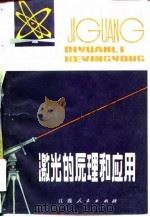
- 激光的原理和应用
- 1978 南昌:江西人民出版社
-

- 激光物理
- 1988 成都:成都电讯工程学院出版社
-

- 激光物理
- 1990 北京:电子工业出版社
-
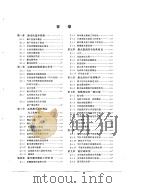
- 激光原理
- 1980 北京:国防工业出版社
-
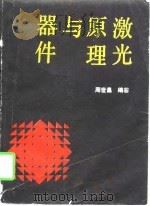
- 激光原理与器件
- 1989 厦门:厦门大学出版社
-
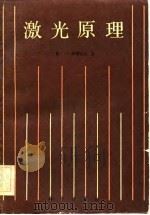
- 激光原理
- 1983 北京:科学出版社
-

- 激光实验原理和方法
- 1988 北京:北京理工大学出版社
-

- 激光音响原理与维修
- 1997 北京:高等教育出版社
提示:百度云已更名为百度网盘(百度盘),天翼云盘、微盘下载地址……暂未提供。➥ PDF文字可复制化或转WORD